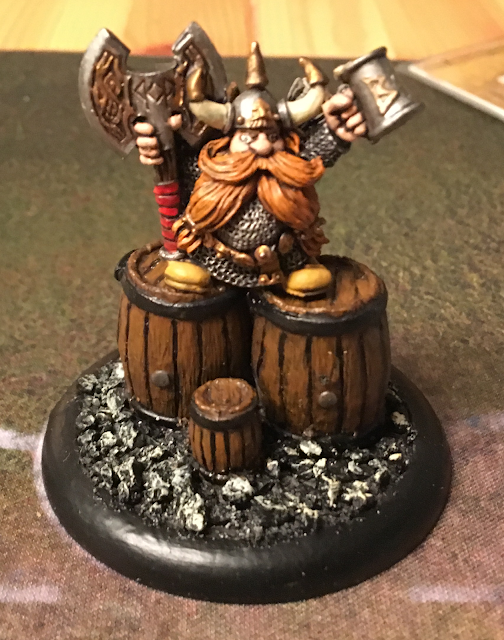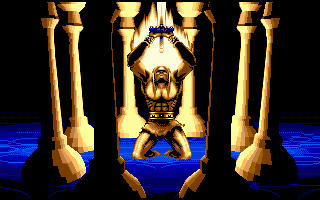Alter Ego has been around forever, and it's about time I finished it up! In order to light a fire under myself to get it done, I actually hired an artist and graphic designer to start working on it...
So last week I brought Alter Ego out again with my playtest group. Looks like it's been about 2 years since it hit the table! I think the overall structure of the game is solid, but there are still a lot of details I think need work. Here's some stuff that's happened just in the last 2 playtest sessions:
Deck Size
I have always used a starting deck size of 12 cards -- 4 each of Job, Family, and Support cards. Actually, since I added "character" cards (each with a unique fight icon and a specific starting deck configuration), the decks started with 13 cards. The game takes about 5 rounds to play... I could lengthen it, but I think it would drag a bit. However, this means that you only add 5 cards to your deck, which isn't very many for a deck learning mechanism...
I don't have much in the way of deck thinning in this game. There are a couple of equipment cards that do it, but mostly I had decided that instead of
thinning your deck, players could focus on Family, thereby drawing a ton of cards instead. This is equivalent in some way to deck thinning, and it means that if you want a "thinner" deck, then you have to focus on Family. If you focus on other things and neglect Family, then you will suffer from deck bloat.
I think I chose 4 of each card (plus or minus) so that you could reasonably have 3 of them at a time. If you play 1 Family card, you avoid a penalty and draw +2 cards next turn. If you play 2, then you draw +4 cards. But if you commit 3 of your 5 cards to Family in one turn, then you draw + cards AND you get a Teamwork token, which is valuable.
Similarly, if you play 1 Community card, you avoid a penalty and draw 1 extra henchman to choose from. 2 is a little stronger (draw +2 henchmen to choose from). 3 Community cards means you draw + 3 henchmen to choose from AND you get to call the police on one of the henchmen in play.
Job cards are a little different in that you gain $ tokens, which you don't have to discard. Playing 3 at once doesn't do anything too special, but most of the equipment costs about 3 to obtain.
Anyway, because of all that, I wanted to make sure players had enough cards to invoke those more powerful plays if they wanted to. However, I might try reducing the starting decks to 3 of each (10 cards if you include the character). Then if the game lasts 5 rounds, then at least a larger portion of your deck will be changed. Also, with the changes below, it's possible I could add a few rounds to the game, further impacting the amount your deck changes over the course of the game.
Villain Format
Since the games inception, the Arch Villains would sit there, out of play, until one (or more) of them were triggered to enter play. Part of the point of the game was to make sure the "right" one came into play, the one you'd have an easier time beating based on the cards you'd taken into your deck throughout the game.
Last week I tried a slightly different format, which I think has a lot of good things going for it. Instead of being "out of play," the three Arch Villains could be in play the whole time. When henchmen come into play, they are placed in front of their affiliated villain, in a way protecting them. During the game, you can't attack an Arch Villain if there are henchmen in front of them. Theoretically, this could lead to more interesting decisions about which henchmen to defeat (you want to save certain colored civilians so you don't lose, you might want particular trophies, you might want to defeat what you can afford to defeat, and you might want to "dig" toward one of the Villains in particular). This way you could also have to face decisions mid-game such as "do we defeat this henchman over here, or do we hit that villain while we have the chance, since he has no henchmen in front of him?"
This format seemed to work, though it'll require some tweaks and changes to fully implement. I think it feels more like a real game this way. It might mean cutting the few henchmen that are affiliated with multiple different villains, and I'll have to decide if unaffiliated henchmen are in front of
no villain, or
all villains.
Turn Structure
It had come up before, more than once, that the turn structure was not intuitive. I have considered changing it, maybe even tried changing it once, but never liked the results. After playing a couple games with my regular testers, I finally conceded that the turn sequence needed to be different. What I had was this...
1. Income phase: collect $ based on what you have in play
2. Support phase: draw cards based on what you have in play (now you have cards in play, a hand of cards, a draw pile, and a discard pile)
3. Patrol phase: draw henchmen based on what you have in play
4. Fight phase: spend icons in play to defeat henchmen. Once in a while you maybe have a card you can play from your hand, but mostly you have a hand at this point to help decide what to do this turn based on what you could maybe do next turn.
5. Recoup phase: discard everything in play, play new cards from hand to use next turn, then discard hand.
The long and short of this was that players were having several problems:
* Confusion between the hand, draw pile, discard pile, and display
* Planning the turn, then having to re-plan the turn once new henchmen were revealed (in the patrol phase, right before fighting)
* Confusion between cards in play that they could use this turn, and cards in hand that they can't use until next turn
There had been suggestions of putting the Support phase right before Recoup, so you draw cards right before using them. I think I even tried this once, but it didn't really solve the problems, and I didn't like it.
I have finally decided to re-organize the turn to actually address those problems. The new sequence is:
1. Support phase: draw cards and play some of them into your display
2. Income phase: collect everything you collect ($, teamwork tokens, penalty tokens)
3. Fight phase: use icons in play to defeat henchmen currently in play
4. Patrol phase: NOW bring new henchmen into play
5. Recoup phase: note how many cards you're supposed to draw, then discard EVERYTHING, hand and display.
So now you still technically have a hand, display, draw pile, and discard pile, but you don't access them at weird times. You draw cards ant the beginning of the turn, use them during the turn, and then discard them at the end of the turn.
Putting Patrol after Fight means you only have to plan each turn once. This is not only less confusing, but it speeds things up quite a bit, and makes a lot of sense. It also approximates other cooperative games in which players get a turn, then the AI they're fighting against gets a turn.
So we tried that a couple of times, and it definitely seemed smoother. I personally sort of missed the ability to know what you would be able to do next turn, but I also didn't have a problem with the old turn sequence. Other players weren't using the info about next turn, and were getting confused, so the obvious right thing to do seems to be reorganizing the turn like this. Also, while you don't know exactly what you'll be able to do next turn, you DO know the general contents of your deck, so you should know what's likely or possible.
On the down side, this new structure introduced a new issue. Now you plan out the turn at the beginning, and then you resolve it. As nothing changes between when you play your cards and you resolve them, there was something a little off about the very end of the game. When you could win, you would know it during the planning stage, and that felt bad somehow. You're sitting there figuring out your turn, making your plans, etc, and one of the other players just says "GG guys, we win this turn." So anti-climactic.
Sure, at SOME point in every game there will be an instant when you've realized you will win. But that should really be you're resolving the action, not when you're planning it. What really ought to happen is that you play the cards, then something happens such that you don't know for sure whether you'll win or not. In the old format, you'd plan your turn, maybe see that you can win this turn, then you had to add new henchmen which might lose you the game before you resolve the fight phase. that wasn't perfect, but it was enough to counter that anti-climactic feeling which appeared as soon as I changed the turn sequence.
So, how to solve this problem, while keeping the improvements of the new turn order? Well, I need something that happens between card play and resolution that could change or foil your plans...
Villain Events
Fortunately, there's something I've been meaning to add to the game anyway: effects each villain could have, which make the game harder, and make the villains feel more different from each other. I hadn't designed those, but I had a few ideas for some effects. For example, the Sadist could kill civilians (you don't get them back when you defeat henchmen), and the mastermind could block access to some of the rules (no calling the police, for example).
So I made a small deck of cards for each villain with some effects on them. At the very beginning of the Fight phase, before anything else happens, you'll flip the top event card for each villain. Their effect will occur, which may be immediate, or may be a static effect that stays active until the next turn's fight phase when a new card replaces this one. These effects could very well foil your plans, making them exactly what I need to keep the game interesting. For example, if you plan the turn and decide that you're able to win this turn, and then all of a sudden, the Anarchist makes you draw new henchmen, and they happen to go in front of the villain you were going to defeat, then you'll have to wait until next turn. Or perhaps the villain you were after suddenly requires 1 more Strength icon to hit -- can you still afford it? Or perhaps they take an extra hostage - can you hit them one more time? Maybe next round...
Further, I wanted to make sure it wasn't all about picking 1 villain, and just piling up the other two with henchmen while you beat up the chosen one. Therefore I put 3 effects on each card, each more severe than the last. The effect in play depends on the number of henchmen in front of that villain. The first tier is currently "no effect" for 0-1 henchmen, but it could also be some small, mostly insignificant effect. This way, if you have the villain's henchmen mostly under control, then the event won't hinder you that bad.
The 2nd tier (2 henchmen) is a bigger effect, often local to the villain and his henchmen. Things like "my henchmen cost an additional Smarts to defeat" or "I cannot be attacked". This has the potential to mess with your game, but not in a huge way.
The 3rd tier (3+ henchmen) is an even bigger effect, often global, affecting all villains or henchmen. Things like "ALL henchmen cost an additional Smarts to defeat" or "no villain can be attacked this turn".
I brainstormed enough effects to make 5 cards per villain:
* The Mastermind effects mostly limit your access to rules (can't call the cops, can't use Teamwork, Equipment costs extra to buy/use).
* The Sadist mostly deal with henchmen and hostages (bring new henchmen into play, rescued hostages are removed from the game, remove civilian tokens from the game, take extra civilians hostage).
* The Anarchist has wild or chaotic effects (players take penalty markers, players draw fewer cards, players draw fewer henchman to choose from)
This is just the first draft, but I'm excited to try it out tomorrow. Assuming the structure works, then I think a little testing and development of those abilities will really make this game feel like a proper co-op.



















































